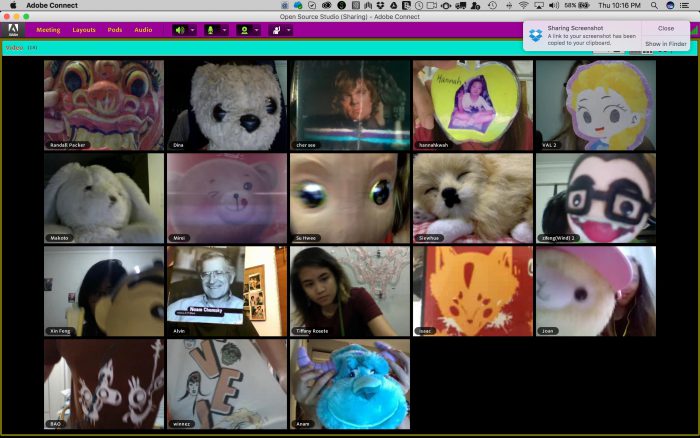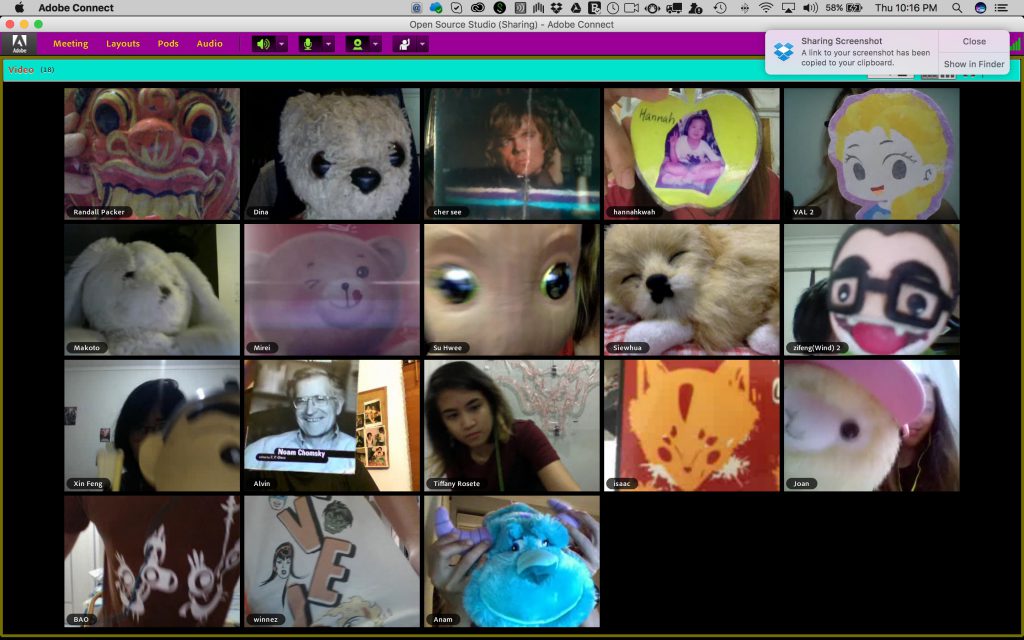Adobe Connect was a great way to conduct our class in because it was a whole new experience for all of us. With the exception of some technical difficulties in the initial part of setting up the online portal and minor connection problems along the way, I felt that it was an effective way to get everyone to participate in the lesson.
We took turns to speak and each of us were given time to share our opinions about The Collective Body project that we worked on over the week leading up to the class. I felt that it was a step forward from the static photographs that were posted on Flickr, especially since we are able to see each other live in a cohesive space, interacting with one another. The participation was unlike the ones we have during class in the physical world because with Adobe Connect, we were all in the comfort of our own homes/location in front of our computer screens.
Perhaps the third space could possibly be the future of the modern classroom setting. All of us were able to stay engaged and conducive despite being in remote spaces.
Here’s a screenshot of all of us in our “masks”:
We can’t possibly achieve this in our usual physical space, now can we? (;


I suppose one way to replicate the mask experiment to which you refer, is for everyone to bring a mask to B1-14, and aggregate the individual videos from Facebook Live like we did in week 1. How does live aggregation on Adobe Connect (AC), compare to live aggregation with Facebook Live?
Educational researchers have a term to describe the excitement that comes with new learning environments like AC. We call it the Novelty Effect (NE), which can last for as long as 15 months, even if all other variables are kept constant. There is the tendency for student performance to initially improve when new technology is used — not because of any actual improvement in learning or achievement — but purely in response to increased interest in AC.
How would you react to the (fake) news that AC lessons will completely replace traditional onsite lessons for over half the courses at ADM, as part of NTU’s TEL@NTU (Technology-Enabled Learning) initiative? What do you think of such a radical move towards fully online courses using AC?